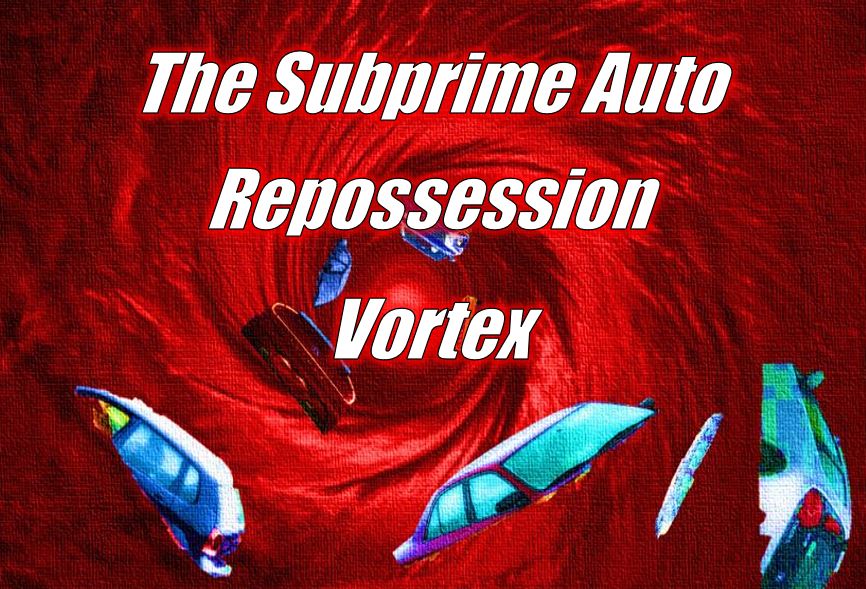With Christmas behind us reality is about to kick in to the millions of Americans with subprime credit who’ve been struggling with inflation and fuel prices, have max’d out their credit cards and are paying too much for that car they bought last year. Hoping to trade down into a cheaper car payment, they are about to face a sad reality, their car is underwater, or in layman’s terms, not worth its payoff value. This value dilemma is about to come to a boil. Do they just keep it and hope they can afford to pay, or just kick it to the curb?
The fourth quarter of 2022 has come to an end and the reason this is significant, is because it is in the fourth quarter that delinquency is traditionally at its highest. But this is no traditional fourth quarter, this is a fourth quarter with rising interest rates that have been quietly sucking the financial resources out of the average American.
Loan to Value
We’ve all been watching this unfold; rising auto sales prices and deflated wholesale values and no one is hit by this hardest that the most vulnerable of credit tiers, subprime. And it is a basic of lending that, due to poor credit history and higher default rates, subprime credit requires lower loan to value on collateral in order to obtain financing.
Unfortunately, they also pay the highest interest rates and this reduces the amount of payment applied to principle. So, the loan balances don’t go down at the same rate as the collateral value and they end up upside down in their LTV (loan to value) anyways.
Add to this the stagnant wholesale sales we’ve all witnessed over the past six months and we can see how the vortex of loss begins.
A Breaking Point
Throughout 2022, subprime credit tiers have been borrowing out of need and necessity all along. Incomes, which traditionally are lower in this credit tranche, have seen much of any increase to offset the staggering increases in the cost of living.
For those hoping to get a handle on their finances to start 2023, restructuring debt and lowering monthly payments, may be a strategy that they will hope to employ. A strategy that unfortunately will likely be unavailable to them.
That car that they bought in 2022, cost an average of 8.59% higher than the year before, has not appreciated in value, for reasons discussed above. Therefore, in order for them to trade it in and get financing, at higher rates than before I might add, they must put additional money down.
Catch-22, If they had that extra money to put down, they wouldn’t likely be in this situation. Twice as bad, if they have that extra money, they need to it to put down on the new purchase because they need a lower LTV to qualify for financing.
37.5%
On December 30th, CarDealrshipGuy on Twitter, who I’d quoted last month in an article titled “The Great Auto Loan Meltdown” reported that 37.5% of the subprime credit customers that they have sold vehicles to, has an open auto loan.
Now, he is a CEO of a dealership group on New York state, but this figure is probably similar across the nation. In fact, if you follow Experian or Trans Union’s posting of average FICO scores across the nation, it’s probably safe to say that this figure is low compared to the swath or lower FICO averages seen across the southern states.
So, with 37.5% or more in some areas, of new auto purchases coming from the subprime FICO tranche, it is pretty safe to assume that a significant portion of these people have been or are going to face this same Catch 22 dilemma.
They have two choices;
- Leave without the purchase and fight to keep the car they have, or;
- Quit paying and let it get repossessed.
It Doesn’t Get Better
With the FED’s need to raise interest rates to cool inflation, it is not expected to ease until September in 2023. The effect of this, is expected to create layoffs and rising unemployment. Unemployment, obviously, leads to defaults and repossessions.
These interest rate increases increase payment amounts. This puts further strain on the average payment to income (PTI.) And for lower income borrowers, this could become more than most can qualify for without paying the maximum allowable rates by law, if even then.
In addition to these increases in defaults and interest rates comes a tightening of underwriting guidelines intended to stave off these defaults. Underwriting guidelines which may lower LTV, DTI and PTI ratios. These factors are already coming into play in the lending community.
Trickle Up
While we’ve focused on the effect of this situation on the subprime credit tranche, they will not be the only ones affected. All of these same factors have been weighing down the mid-FICO tranches as well as prime over the past year.
Much like the subprime tranche, inflation, unemployment and inability to access once upon a time easy credit, will cause strain on all levels of credit. Remember, a credit score is not a guarantee of financial stability.
A FICO score is only a scorecard of past credit performance. And with the tweaking of the Fair Isaac Model that they’ve done over the past two years, it has been horribly erratic and by no means even a fair gauge of future performance, but perhaps I’ll beat up on that some other time.
Many borrowers are usually just one paycheck away from complete default across the board. Throw a blown transmission or medical emergency into the mix and even the average borrower will break.
Pixie Dust
I’ve seen this before. The Dot com bust, the Great Recession and even the smaller recessions before. Other than at the offset of the pandemic, America has not seen a real recession in over twelve years. Unfortunately, it’s about to see a bad one.
Mark my words. There will be repossessions, many of them and most likely more than have been seen since the Great Recession or worse.
Might the government intervene again as it did during the pandemic? Probably at the state and local level at least, but loan deferments and repossession moratoriums only prolong the inevitable. The economy requires people to be at work and goods and interest rates to be at stable levels. It takes time to achieve this balance once it’s lost.
There is no panacea and there is no pixie dust to fix this under the current economy. It is something that will just have to work its way through until the economy gets its balance back. And let’s all pray it does.
Kevin
Subprime Vortex Will and the Repossession Meltdown – Repossession – Credit Union Collections – Credit Union Collectors












Facebook Comments